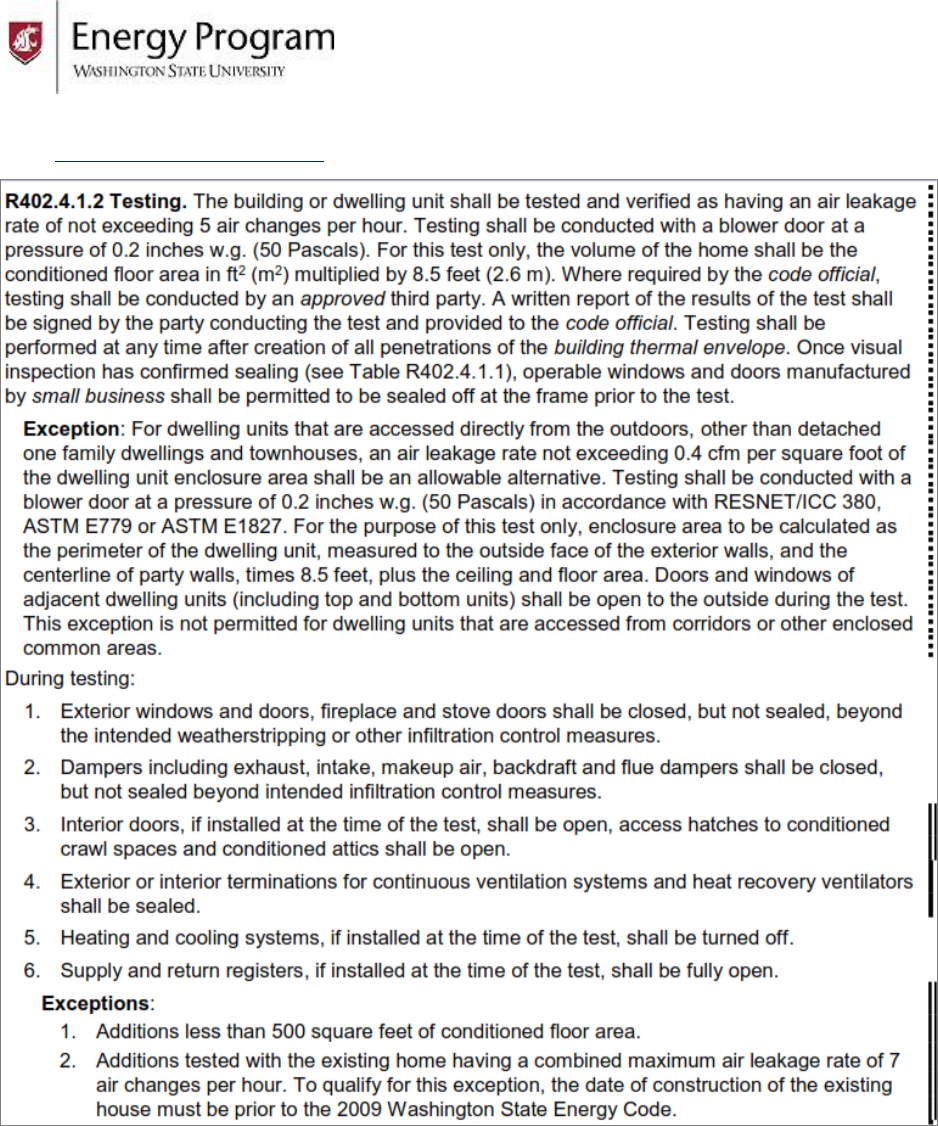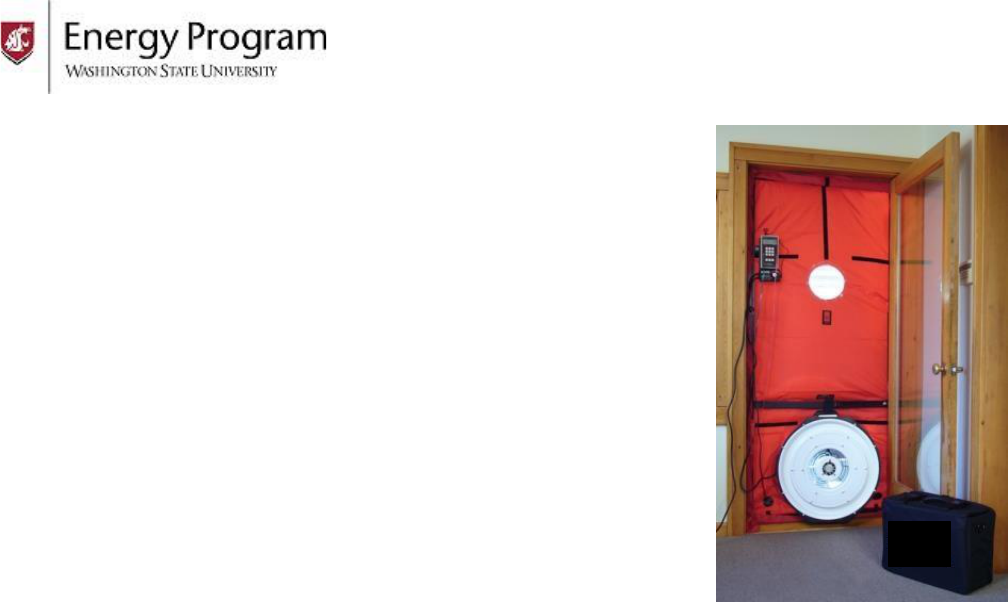
Building Air Leakage Testing
1
The 2018 Washington State Energy Code (WSEC) section R402.4.1.2
requires air leakage testing for all new houses and additions (see code text
below). The requirement is met if the structure has a leakage rate of 5 air
changes per hour when depressurized with a blower door to 50 Pascals or
less (5ACH
50
). A Pascal is a measurement of pressure. 249 Pascals are
equal to a 1-inch column of water. The test must be performed using a
blower door device consisting of a large fan, frame and panel. A
manometer (pressure gauge) is used to read house and fan pressures.
WSEC states that the test may be performed at any time after rough in.
All penetrations in the building envelope must be sealed including those
for utilities, plumbing, electrical, ventilation and combustion appliances.
The code also states that the test shall be conducted by an approved
third party when required by the building official.
To conduct the test:
1. Close all windows, doors and fireplace and stove doors.
2. Close all dampers including exhaust, intake, make-up air, backdraft
and flue dampers. Since you will be depressurizing the house, dampers in bath fans, etc. will be
sucked closed during the test and will therefore not negatively affect the results.
3. Make sure plumbing traps are filled with water.
4. Leave doors between heated areas open.
5. Open access hatches to conditioned attics and/or conditioned crawl spaces. Leave hatches
closed if these are unconditioned areas.
6. Seal exterior openings for continuously operating ventilation systems and heat recovery
ventilators.
7. Turn off heating and cooling systems but do not seal supply or return registers.
8. Adjust all combustion appliances so that they do not turn on during the test.
9. Install the blower door in an exterior door opening and connect hoses from the manometer to the
blower door fan and the exterior pressure tap. See manufacturer’s instructions for correct set-up.
10. Depressurize the house to -50 Pascals.
11. Record the flow rate (with simple manometers, the fan pressure (Pa) is converted to CFM
50
using a flow table. Many digital manometers sold with blower doors can automatically perform
this conversion, and display
CFM
50
directly. Consult blower door and manometer manuals.
You must now convert the flow rate (CFM
50
) to ACH
50
. Use the following formula:
ACH
50
= (CFM50 X 60) / Volume
Where: ACH
50
= air changes per hour at -50 Pascals
CFM
50
x 60 = converts cubic feet per minute to cubic feet per hour
Volume = conditioned floor area of housing unit multiplied by ceiling height of
8.5 feet (per 402.4.1.2 Testing)
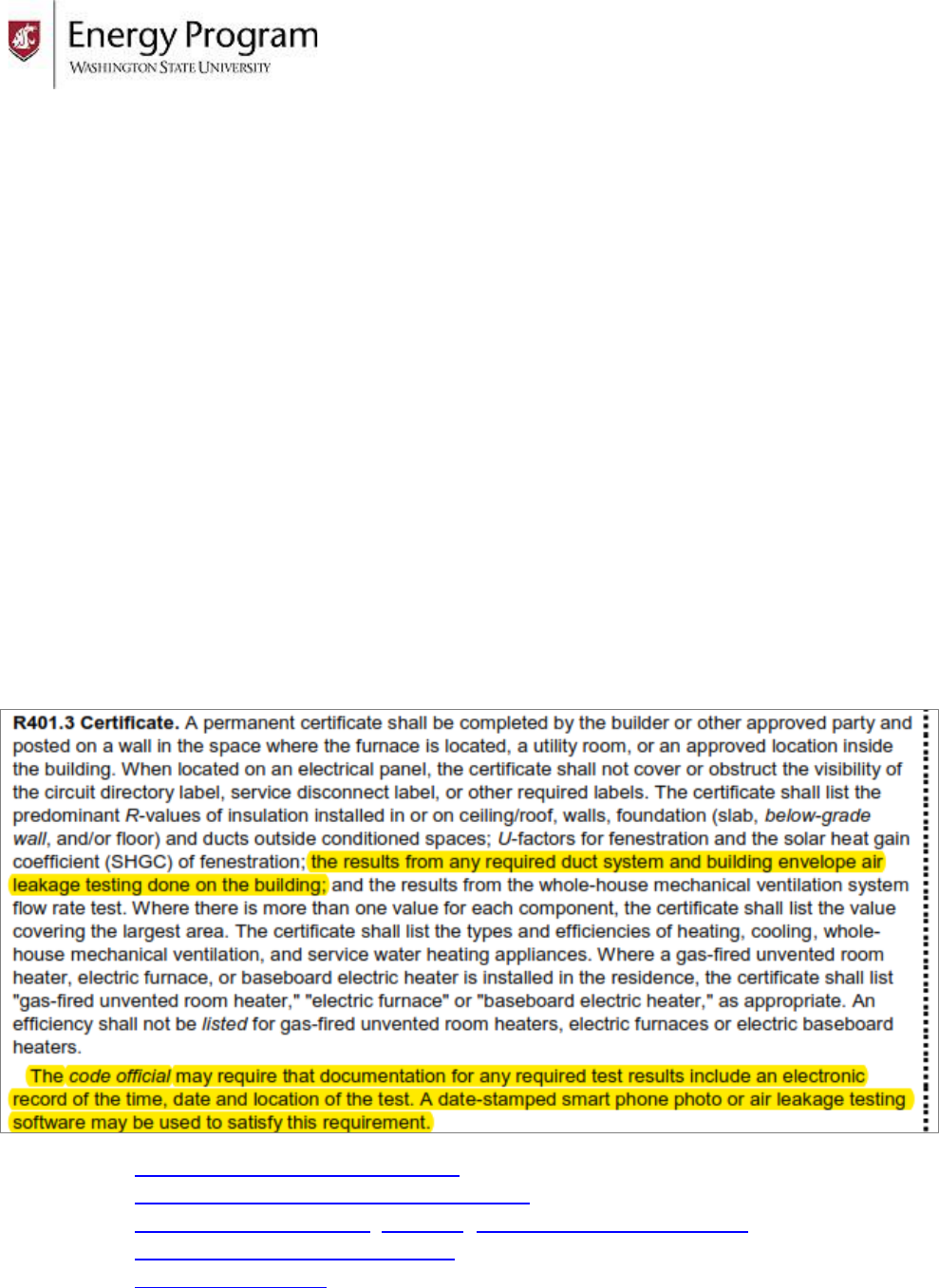
Building Air Leakage Testing
2
Example: A blower door test on a 2,000 sf house and fan flow (CFM
50
) rate of 1,100 CFM:
ACH
50
= (CFM
50
x 60) / volume ACH
50
= (1,100 x 60) / (2,000 x 8) ACH
50
= 66,000/16,000
ACH
50
= 4.1
Because the code requires that the ACH
50
be less than 5, this house complies with an ACH
50
of
4.1. Record the ACH
50
on the compliance certificate posted on or near the electrical panel.
Energy Credit: If additional energy credits are selected from Air Leakage Control and Efficient
Ventilation Options 2.1 to 2.4 in Table 406.3 (below), the requirements for the blower door
testing leakage rates are more stringent (lower).
Corridor and non-corridor low-rise multifamily (R2)
If the building has a conditioned corridor, test the whole building all at once and use 5 ACH@50PA
for compliance, per R402.4.1 for maximum leakage rates.
If the building does not have a conditioned corridor (garden style), a different test is used where
envelope leakage rates measure no greater than 0.4 CFM@50PA per sf of apartment surface area.
This area term includes all adjacent units and area to outside exterior walls, floor and ceilings. Each
unit shall be tested per R402.4.1.2. All tests results shall be documented per R401.3 Certificate.
Floor area weighted whole building tested leakage rate for each unit can be used to document on
certificate in each unit, or as approved by the authority having jurisdiction (AHJ).
Useful Links: 2018 WSEC Compliance Certificate
2018 Compliance Certificate - Instructions
The Energy Conservatory, Retrotec, Residential Energy Dynamics
Air Barrier Association of America
Home Energy Raters
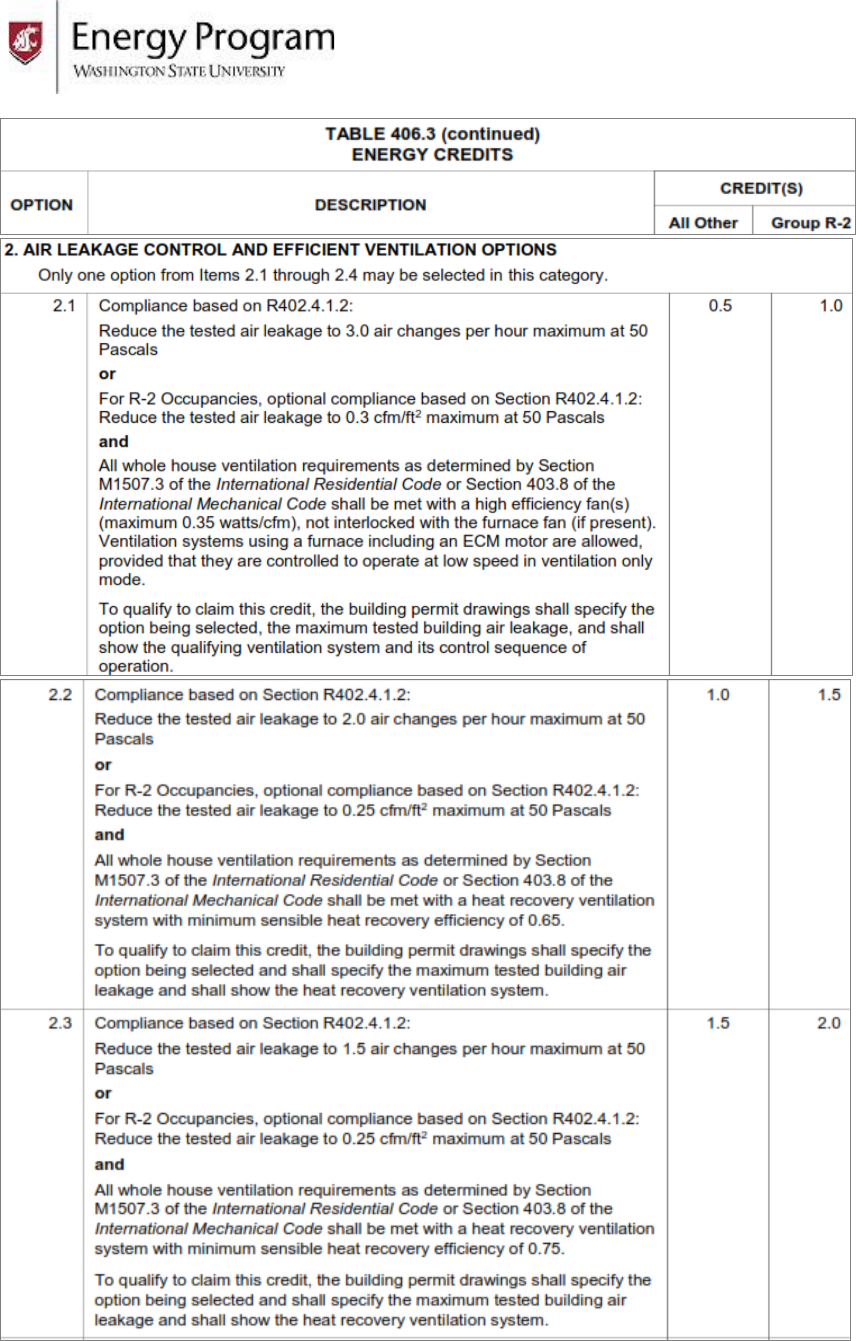
Building Air Leakage Testing
4
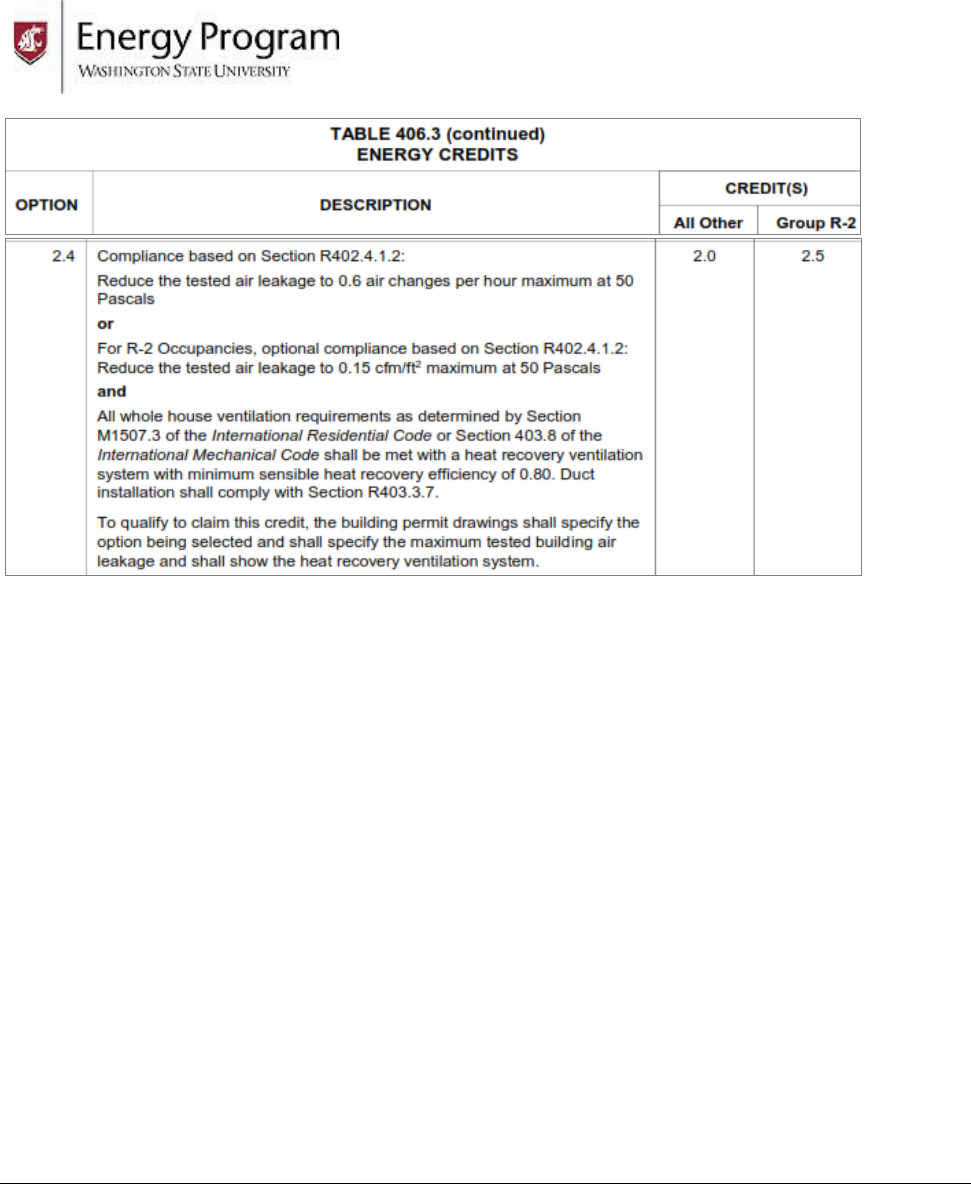
Building Air Leakage Testing
5
© 2010 Washington State University Energy Program.
This publication contains material written and produced for public distribution. Permission to copy or disseminate all or
part of this material is granted, provided that the copies are not made or distributed for commercial advantage, and
that each is referenced by title with credit to the WSU Energy Program. Copying, reprinting or dissemination, electronic
or otherwise, for any other use requires prior written permission from the WSU Energy Program.
WSUEEP10-001 Rev. 2, December 2020
